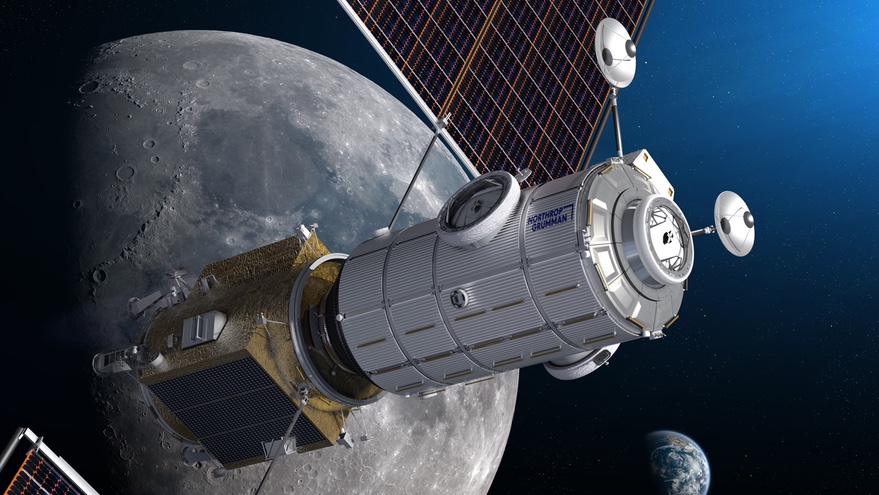Products You May Like
WASHINGTON — Northrop Grumman has taken another charge on its contract to build a module for NASA’s lunar Gateway, bringing its losses for the year on that program to $100 million.
In its fourth quarter and full year 2023 earnings release Jan. 25, the company disclosed a $42 million “unfavorable EAC [estimate at completion] adjustment” on its contract to build the Habitation and Logistics Outpost (HALO) module for the Gateway. The company recorded a similar $36 million charge in the second quarter and said the overall charge for the year on the contract reached $100 million.
The company blamed the latest charge primarily on “cost growth stemming from evolving Lunar Gateway architecture and mission requirements combined with macroeconomic challenges.” The company offered the same explanation when it reported the charge in the second quarter.
Northrop received a $935 million fixed-price contract from NASA in July 2021 to build the module, which is based on the company’s Cygnus cargo spacecraft. HALO will provide initial living accommodations on the Gateway and includes several docking ports for visiting Orion spacecraft and lunar landers as well as additional modules provided by international partners. It will launch together with the Maxar-built Power and Propulsion Element (PPE) on a Falcon Heavy.
In July, when Northrop reported the second-quarter charge, company executives said they thought they had mitigated the risk of design changes by doing initial work on HALO under cost-plus contracts before accepting a fixed-price contract to produce it.
“As it’s turning out on the HALO program, the requirements are not as stable as we or the government anticipated, and we’re working with them to address that change management as we go forward,” Kathy Warden, chief executive of Northrop Grumman, said in the July earnings call.
Warden mentioned the latest charge only in passing in the company’s latest earning call, which was dominated by discussion of a far larger charge the company took on its contract for production of the B-21 stealth bomber. “We have programs like HALO which we have certainly learned some additional lessons and are applying those as we move forward,” she said.
Northrop, she said, was taking a more cautious approach bidding on fixed-price contracts in general. “We have taken a different approach in looking at firm fixed price, where we’ve either declined to bid if the customer chose to go fixed price, or we’ve offered a price, in the case of SDA Tranche 2, that we thought was fair and reasonable and the customer decided not to further negotiate with us.”
The Space Development Agency awarded contracts to L3Harris, Lockheed Martin and Sierra Space Jan. 16 for the Tracking Layer Tranche 2 constellation of missile-tracking satellites with a combined value of about $2.5 billion. Northrop had won a contract in 2022 to provide some of the satellites for Tracking Layer Tranche 1.
NASA had been working towards an October 2025 launch of HALO and PPE, but the agency’s announcement Jan. 9 that it was delaying the next two Artemis missions by nearly a year could separately delay the launch of the first Gateway elements.
“We’re now working with our industry partners at Maxar and Northrop Grumman to review the schedule of when it makes sense to launch that before Artemis 4,” which is scheduled for no earlier than September 2028, said Amit Kshatriya, NASA deputy associate administrator for the Moon to Mars Program, in a call with reporters to announce the delay. “We believe they have a great path to get it there to support that mission, but we will be updating that schedule.”
